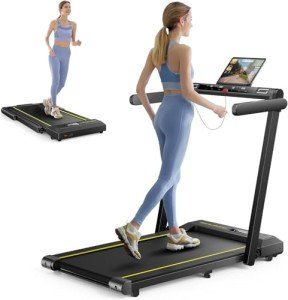The Rise of Manual Walking Pads: A Comprehensive Guide
In today's hectic world, keeping a healthy way of life can be an obstacle. For numerous individuals, finding the time to exercise can be a challenging job, resulting in sedentary habits. Manual Incline Treadmill is where manual walking pads emerge as a convenient option that enables users to remain active without compromising their schedules. This blog site post will look into the different elements of manual walking pads, their benefits, what to think about before purchasing one, and regularly asked concerns to help you make notified choices.
What is a Manual Walking Pad?
A manual walking pad is a compact, non-motorized treadmill developed for walking, running, or light running. Unlike traditional treadmills that depend on electric motors for speed control and incline adjustments, manual walking pads are powered exclusively by the user's movement. They are normally light-weight, portable, and created for home or workplace use, making them an ideal solution for busy people looking to include exercise into their everyday regimens.
Advantages of Using a Manual Walking Pad
- Cost-Effective: Manual walking pads are typically less costly than their motorized counterparts.
- Space-Saving: Their compact style indicates they can fit into small areas, making them ideal for apartments and home workplaces.
- Portable: Most designs are light-weight and simple to carry, allowing users to put them in numerous locations.
- No Electricity Required: Since these pads are manual, they do not require a source of power, conserving energy and eliminating concerns about electrical hazards.
- Mild on Joints: Walking pads supply a low-impact exercise, which is easier on your joints than running or high-impact exercises.
- Customized Pace: Users can stroll at their own speed, making it easy to tailor the intensity of their exercise according to their physical fitness level.
Secret Features to Look For
When shopping for a manual walking pad, consider the following functions:
| Feature | Description |
|---|---|
| Size | Ensure the measurements fit your readily available space and your needs. |
| Weight | Light-weight models are easier to move and store. |
| Belt Width | A wider belt provides more space and stability for walking. |
| Max Weight Capacity | Check the optimum user weight limitation to ensure viability. |
| Safety Features | Search for functions such as emergency situation stop or safety tether. |
| Adjustability | Some designs may use adjustable inclines to increase exercise strength. |
The Manual Walking Pad Market
As the need for home fitness options increases, so does the variety of manual walking pads offered in the market. Below is a comparison table of some of the popular brands and their noteworthy functions:
| Brand | Model | Measurements (LxWxH) | Weight Capacity | Price Range |
|---|---|---|---|---|
| Brand A | Model 1 | 50" x 24" x 5" | 250 pounds | ₤ 150 - ₤ 200 |
| Brand B | Model 2 | 55" x 25" x 6" | 300 pounds | ₤ 200 - ₤ 250 |
| Brand name C | Design 3 | 48" x 20" x 5" | 220 pounds | ₤ 120 - ₤ 170 |
| Brand D | Model 4 | 60" x 26" x 7" | 350 lbs | ₤ 250 - ₤ 300 |
How to Maximize Your Walking Pad Experience
To get the most out of your manual walking pad, here are some tips:
- Set a Goal: Establish daily, weekly, and regular monthly fitness objectives to remain determined.
- Integrate into Daily Routine: Use the pad while enjoying television, throughout conferences, or while reading.
- Mix Up Your Pace: Alternate between fast and sluggish walking speeds to boost cardiovascular advantages.
- Usage Proper Posture: Stand tall, engage your core, and keep your direct to avoid pressure.
- Stay Consistent: Aim for a minimum of 30 minutes of walking a day for optimum health advantages.
FAQ About Manual Walking Pads
1. Are manual walking pads appropriate for everyone?
Yes, manual walking pads can be suitable for the majority of people, however people with certain health conditions ought to consult their healthcare service provider before beginning any new workout regimen.
2. Just how much area do I need for a manual walking pad?
While the pad's portability allows for simple storage, an area of about 6-10 square feet is usually advised for comfortable usage.
3. Can I work on a manual walking pad?
Many manual walking pads are developed for walking or light jogging. Running may be possible but might strain the gadget or user if it's not developed for high speeds.
4. How do I keep my manual walking pad?
Keep the pad tidy and devoid of debris, and look for wear on the walking belt and frame. Routinely inspect it for any loose parts and tighten up as required.
5. Can I use a manual walking pad while working?
Yes, many individuals use them while operating at a desk, allowing multi-tasking and promoting an active lifestyle at the exact same time.
Manual walking pads present an excellent chance for individuals wanting to integrate physical activity into their lives without frustrating their schedules. With numerous models offered, comprehending their benefits, functions, and considerations will assist you in making an informed choice. By embracing these compact physical fitness tools, users can seamlessly incorporate exercise into their routines, paving the method for healthier living.

